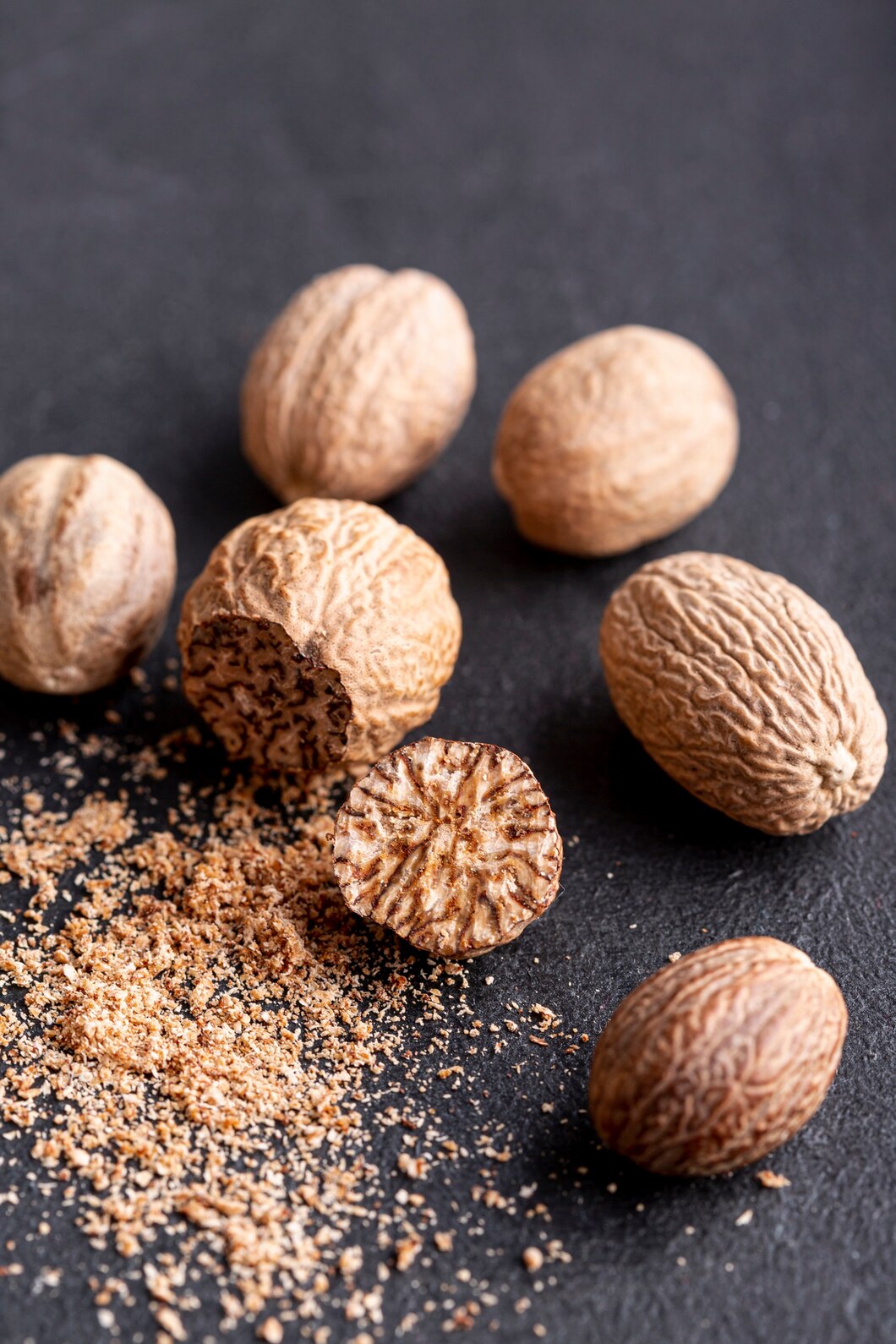While most foods are safe and nutritious when consumed in moderation, some can become toxic if eaten in large amounts. Here’s a look at ten such foods and why they can be dangerous in excess.
1. Nutmeg
Nutmeg is a common spice used to flavor desserts and beverages. However, consuming large quantities of nutmeg can lead to “nutmeg intoxication,” causing symptoms such as hallucinations, dizziness, nausea, and even seizures. This is due to a compound called myristicin, which has psychoactive effects.
2. Almonds
Almonds come in two varieties: sweet and bitter. Bitter almonds contain amygdalin, which can release cyanide when metabolized. Eating a small number of bitter almonds can lead to cyanide poisoning, resulting in symptoms such as headaches, dizziness, and nausea.
3. Cherries
The pits of cherries contain amygdalin, the same compound found in bitter almonds. When the pits are crushed or chewed, they can release cyanide. While swallowing a whole pit is usually not harmful, consuming large amounts or chewing them can be dangerous.
4. Potatoes
Potatoes contain a natural toxin called solanine, especially when they are green or sprouted. High levels of solanine can cause symptoms such as nausea, vomiting, headaches, and neurological problems. It’s important to avoid eating green or sprouted potatoes.
5. Rhubarb Leaves
While the stalks of rhubarb are safe and commonly used in cooking, the leaves contain oxalic acid and anthraquinone glycosides, which are toxic. Consuming large amounts of rhubarb leaves can cause difficulty breathing, seizures, and even kidney failure.
6. Tomatoes
Tomato plants, including the leaves and stems, contain a toxin called tomatine. While ripe tomatoes contain only trace amounts and are safe to eat, consuming large amounts of green tomatoes or the plant itself can cause gastrointestinal distress.
7. Tuna
Tuna is high in protein and omega-3 fatty acids but also contains methylmercury, a toxic compound. Eating too much tuna can lead to mercury poisoning, causing neurological and developmental problems, particularly in young children and pregnant women.
8. Brazil Nuts
Brazil nuts are rich in selenium, a vital mineral, but consuming too many can lead to selenium toxicity. Symptoms of selenium overdose include hair loss, gastrointestinal upset, fatigue, and in severe cases, neurological damage.
9. Cinnamon
Cinnamon is generally safe in small amounts, but consuming large quantities, especially in the form of cinnamon powder, can lead to liver damage due to the compound coumarin. Excessive cinnamon consumption can also irritate the mouth and cause breathing problems.
10. Soy Sauce
Soy sauce is high in sodium, and drinking it in large quantities can lead to hypernatremia or salt poisoning. This condition causes symptoms such as extreme thirst, confusion, and in severe cases, seizures and coma.
While these foods can be part of a healthy diet, it’s important to consume them in moderation to avoid potential health risks. Being aware of the potential dangers of overconsumption can help ensure that you enjoy these foods safely. Always consult with a healthcare provider if you have concerns about food-related risks or experience adverse symptoms.








